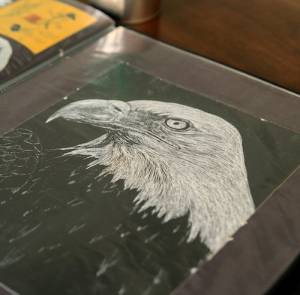An art portfolio is a vital tool for artist students, showcasing their skills, creativity, and artistic growth. Whether applying to art schools, seeking scholarships, or pursuing professional opportunities, a well-crafted portfolio can make a significant impact. In this article, we will explore the essential steps for artist students to build an impressive art portfolio that effectively represents their talent and artistic vision.

- Define Your Artistic Focus: Begin by clarifying your artistic focus and identifying the themes, subjects, or mediums that resonate with you. This will help you create a cohesive and meaningful portfolio that reflects your artistic style and interests.
- Select Your Best Work: Review your body of work and carefully select your best pieces. Choose artworks that demonstrate technical skill, creativity, and personal growth. Aim for a diverse selection that showcases your range of abilities and artistic exploration.
- Consider Presentation and Organization: Decide on the format and presentation style for your portfolio. It can be physical, with artworks mounted or placed in a portfolio case, or digital, using a website or digital portfolio platform. Ensure that your chosen presentation method enhances the overall visual impact of your artwork.
- Craft an Artist Statement: Include an artist statement that provides insight into your artistic process, inspirations, and conceptual framework. This statement adds depth and context to your portfolio, giving viewers a deeper understanding of your work and creative intentions.
- Document Your Artwork: Take high-quality photographs or scans of your artwork for digital portfolios or print reproductions. Pay attention to lighting, composition, and color accuracy to capture the essence of your artwork accurately. Consistency in image quality across your portfolio is crucial.
- Seek Feedback and Critique: Share your portfolio with trusted peers, mentors, or art teachers for constructive feedback and critique. Their insights can help you identify strengths, weaknesses, and areas for improvement. Consider their feedback thoughtfully and make necessary revisions to strengthen your portfolio.
- Create a Captivating Presentation: Focus on the overall presentation of your portfolio. Pay attention to the order and flow of your artwork, ensuring a visually engaging and coherent narrative. Consider the placement of artworks, the use of negative space, and the balance of colors, shapes, and sizes.
- Include Process and Sketchbook Work: Don’t hesitate to include process work, sketches, and preliminary studies that demonstrate your artistic journey and creative problem-solving. This shows your artistic process, dedication, and the evolution of your ideas.
- Regularly Update and Evolve: View your portfolio as a dynamic entity that evolves with your artistic growth. Continuously update and refine it as you create new artworks, experiment with different techniques, and explore new artistic directions. Keep your portfolio relevant and reflective of your current artistic achievements.
- Present Your Portfolio Confidently: Practice presenting your portfolio with confidence and articulating your artistic choices. Develop the ability to discuss your artworks, techniques, and conceptual ideas concisely. This will help you make a strong impression during portfolio reviews or interviews.
Conclusion: Building an art portfolio is a crucial step for artist students to showcase their skills and artistic vision. By following these essential steps, you can create a compelling portfolio that effectively represents your artistic journey, highlights your talent, and captures the attention of art schools, scholarships, or professional opportunities. Remember, your portfolio is a reflection of your passion and dedication, so invest time and effort into crafting a portfolio that truly represents your artistic identity.